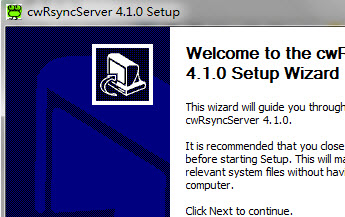最近无意打开了DOSBOX的配置文件,看了下,试着翻译了一下,初中英语水平,错的地方请高手指出,谢谢
dosBox的配置文件是 dosbox.conf
[sdl]
# fullscreen -- Start dosbox directly in fullscreen.
#全屏启动dosbox
# autolock -- Mouse will automatically lock, if you click on the screen.
#如果你在屏幕上点一下,鼠标将会自动锁住
# sensitiviy -- Mouse sensitivity.
#鼠标敏感度
# waitonerror -- Wait before closing the console if dosbox has an error.
#如果dosbox错误,在关闭控制台之前等待
fullscreen=true
autolock=true
sensitivity=100
waitonerror=true
[dosbox]
# language -- Select another language file.
#选择另一种语言
# memsize -- Amount of memory dosbox has in megabytes.
#dosbox内存大小 百万字节(MB)为单位
language=
memsize=16
[render]
# frameskip -- How many frames dosbox skips before drawing one.
#在绘图前dosbox跳多少帧
# snapdir -- Directory where screenshots get saved.
#屏幕截图保存的目录
# scaler -- Scaler used to enlarge/enhance low resolution modes.
#扩大/提高低分辨率缩放模式
# Supported are none,normal2x,advmame2x
frameskip=0
snapdir=snaps
scaler=normal2x
[cpu]
# cycles -- Amount of instructions dosbox tries to emulate each millsecond.
#dosbox尝试每豪秒模拟的指令数量
# Setting this higher than your machine can handle is bad!
#设置此项高过于你的CPU处理能力是不行的
cycles=1800
[mixer]
#声音混合器
# nosound -- Enable silent mode, sound is still emulated though.
#启动静音模式,声音仍然在模拟!
# rate -- Mixer sample rate, setting any devices higher than this will
# probably lower their sound quality.
#混合器采样率,设置过高或许会降低声音的质量
# blocksize -- Mixer block size, larger blocks might help sound stuttering
# but sound will also be more lagged.
#混合器区块大小,较大的区块大小也许能解决声音停顿,但是也会更加滞后
# wavedir -- Directory where saved sound output goes when you use the
# sound record key-combination, check README file.
#当你使用组合键录音时录音保存的目录,请阅读README.txt文件
nosound=false
rate=22050
blocksize=2048
wavedir=waves
[midi]
# mpu401 -- Enable MPU-401 Emulation.
#开启MPU-401模拟
# device -- Device that will receive the MIDI data from MPU-401.
#所选装置将会从MPU-401接收MIDI数据
# This can be default,alsa,oss,win32,coreaudio,none.
#可以设置default,alsa,oss,win32,coreaudio,none几个值
# config -- Special configuration options for the device.
#装置特别配置选项
mpu401=true
device=default
config=
[sblaster]
# sblaster -- Enable the soundblaster emulation.
#开启soundblaster模拟
# base,irq,dma -- The IO/IRQ/DMA address of the soundblaster.
#soundblaster的IO/IRQ/DMA地址
# sbrate -- Sample rate of soundblaster emulation.
#soundblaster模拟采样率
# adlib -- Enable the adlib emulation.
#开启adlib模拟
# adlibrate -- Sample rate of adlib emulation.
#adlib模拟采样率
# cms -- Enable the Creative Music System/Gameblaster emulation.
#启动CMS/Gameblaster 模拟
# Enabling both the adlib and cms might give conflicts!
#同时开启adlib和cms有可能产生冲突!
# cmsrate -- Sample rate of cms emulation.
#CMS模拟采样率
sblaster=true
base=220
irq=7
dma=1
sbrate=22050
adlib=true
adlibrate=22050
cms=false
cmsrate=22050
[speaker]
#喇叭
# pcspeaker -- Enable PC-Speaker emulation.
#开启PC喇叭模拟
# pcrate -- Sample rate of the PC-Speaker sound generation.
#PC喇叭采样率
# tandy -- Enable Tandy 3-Voice emulation.
#开启Tandy公司的3-Voice模拟
# tandyrate -- Sample rate of the Tandy 3-Voice generation.
#Tandy公司3-Voice采样率
# disney -- Enable Disney Sound Source emulation.
#开启disney(狄斯耐)音源模拟
pcspeaker=true
pcrate=22050
tandy=true
tandyrate=22050
disney=true
[bios]
# Nothing to setup yet!
#无任何设置
[dos]
# xms -- Enable XMS support.启用XMS支持
# ems -- Enable EMS support.启用EMS支持
# dpmi -- Enable builtin DPMI host support.
#启用建立DPMI主机支持
# This might help in getting some games to work, but might crash others.
#这可能对一些游戏运行有利,但是其他一些游戏有可能导致PSP当机。
# So be sure to try both settings.
#试着设定TURE和FALSE来确定吧
xms=true
ems=true
dpmi=true
[modem]
# modem -- Enable virtual modem emulation.
#开启虚拟调制解调器模拟
# comport -- COM Port modem is connected to.
#modem连接的COM端口
# listenport -- TCP Port the momdem listens on for incoming connections.
#
modem=true
comport=2
listenport=23
[autoexec]
# Lines in this section will be run at startup.
#这一段将会在启动dosbox时运行(注:DOS游戏存放目录,可自由更改,比如mount c ms0:/psp/DosGame)
mount c ms0:/psp/DosGame
下面附一个标准的dosbox.conf 文件
# This is the configurationfile for DOSBox 0.72.
# Lines starting with a # are commentlines.
# They are used to (briefly) document the effect of each option.
[sdl]
# fullscreen -- Start dosbox directly in fullscreen.
# fulldouble -- Use double buffering in fullscreen.
# fullresolution -- What resolution to use for fullscreen: original or fixed size (e.g. 1024x768).
# windowresolution -- Scale the window to this size IF the output device supports hardware scaling.
# output -- What to use for output: surface,overlay,opengl,openglnb,ddraw.
# autolock -- Mouse will automatically lock, if you click on the screen.
# sensitiviy -- Mouse sensitivity.
# waitonerror -- Wait before closing the console if dosbox has an error.
# priority -- Priority levels for dosbox: lowest,lower,normal,higher,highest,pause (when not focussed).
# Second entry behind the comma is for when dosbox is not focused/minimized.
# mapperfile -- File used to load/save the key/event mappings from.
# usescancodes -- Avoid usage of symkeys, might not work on all operating systems.
fullscreen=false
fulldouble=false
fullresolution=640x480
windowresolution=originnal
output=surface
autolock=true
sensitivity=100
waitonerror=true
priority=higher,normal
mapperfile=mapper.txt
usescancodes=true
[dosbox]
# language -- Select another language file.
# memsize -- Amount of memory DOSBox has in megabytes.
# machine -- The type of machine tries to emulate:hercules,cga,tandy,pcjr,vga.
# captures -- Directory where things like wave,midi,screenshot get captured.
language=
machine=vga
captures=capture
memsize=128
[render]
# frameskip -- How many frames DOSBox skips before drawing one.
# aspect -- Do aspect correction, if your output method doesn't support scaling this can slow things down!.
# scaler -- Scaler used to enlarge/enhance low resolution modes.
# Supported are none,normal2x,normal3x,advmame2x,advmame3x,hq2x,hq3x,
# 2xsai,super2xsai,supereagle,advinterp2x,advinterp3x,
# tv2x,tv3x,rgb2x,rgb3x,scan2x,scan3x.
# If forced is appended (like scaler=hq2x forced), the scaler will be used
# even if the result might not be desired.
frameskip=0
aspect=true
scaler=advinterp2x
[cpu]
# core -- CPU Core used in emulation: normal,simple,dynamic,auto.
# auto switches from normal to dynamic if appropriate.
# cycles -- Amount of instructions DOSBox tries to emulate each millisecond.
# Setting this value too high results in sound dropouts and lags.
# You can also let DOSBox guess the correct value by setting it to max.
# The default setting (auto) switches to max if appropriate.
# cycleup -- Amount of cycles to increase/decrease with keycombo.
# cycledown Setting it lower than 100 will be a percentage.
core=normal
cycles=6100
cycleup=500
cycledown=20
[mixer]
# nosound -- Enable silent mode, sound is still emulated though.
# rate -- Mixer sample rate, setting any devices higher than this will
# probably lower their sound quality.
# blocksize -- Mixer block size, larger blocks might help sound stuttering
# but sound will also be more lagged.
# prebuffer -- How many milliseconds of data to keep on top of the blocksize.
nosound=false
rate=22050
blocksize=2048
prebuffer=10
[midi]
# mpu401 -- Type of MPU-401 to emulate: none, uart or intelligent.
# device -- Device that will receive the MIDI data from MPU-401.
# This can be default,alsa,oss,win32,coreaudio,none.
# config -- Special configuration options for the device. In Windows put
# the id of the device you want to use. See README for details.
mpu401=intelligent
device=default
config=
[sblaster]
# sbtype -- Type of sblaster to emulate:none,sb1,sb2,sbpro1,sbpro2,sb16.
# sbbase,irq,dma,hdma -- The IO/IRQ/DMA/High DMA address of the soundblaster.
# mixer -- Allow the soundblaster mixer to modify the DOSBox mixer.
# oplmode -- Type of OPL emulation: auto,cms,opl2,dualopl2,opl3.
# On auto the mode is determined by sblaster type.
# All OPL modes are 'Adlib', except for CMS.
# oplrate -- Sample rate of OPL music emulation.
sbtype=sb16
sbbase=220
irq=7
dma=1
hdma=5
mixer=true
oplmode=auto
oplrate=22050
[gus]
# gus -- Enable the Gravis Ultrasound emulation.
# gusbase,irq1,irq2,dma1,dma2 -- The IO/IRQ/DMA addresses of the
# Gravis Ultrasound. (Same IRQ's and DMA's are OK.)
# gusrate -- Sample rate of Ultrasound emulation.
# ultradir -- Path to Ultrasound directory. In this directory
# there should be a MIDI directory that contains
# the patch files for GUS playback. Patch sets used
# with Timidity should work fine.
gus=true
gusrate=22050
gusbase=240
irq1=5
irq2=5
dma1=3
dma2=3
ultradir=C:\ULTRASND
[speaker]
# pcspeaker -- Enable PC-Speaker emulation.
# pcrate -- Sample rate of the PC-Speaker sound generation.
# tandy -- Enable Tandy Sound System emulation (off,on,auto).
# For auto Tandysound emulation is present only if machine is set to tandy.
# tandyrate -- Sample rate of the Tandy 3-Voice generation.
# disney -- Enable Disney Sound Source emulation. Covox Voice Master and Speech Thing compatible.
pcspeaker=true
pcrate=22050
tandy=auto
tandyrate=22050
disney=true
[joystick]
# joysticktype -- Type of joystick to emulate: auto (default), none,
# 2axis (supports two joysticks,
# 4axis (supports one joystick, first joystick used),
# 4axis_2 (supports one joystick, second joystick used),
# fcs (Thrustmaster), ch (CH Flightstick).
# none disables joystick emulation.
# auto chooses emulation depending on real joystick(s).
# timed -- enable timed intervals for axis. (false is old style behaviour).
# autofire -- continuously fires as long as you keep the button pressed.
# swap34 -- swap the 3rd and the 4th axis. can be useful for certain joysticks.
# buttonwrap -- enable button wrapping at the number of emulated buttons.
joysticktype=auto
timed=true
autofire=false
swap34=false
buttonwrap=true
[serial]
# serial1-4 -- set type of device connected to com port.
# Can be disabled, dummy, modem, nullmodem, directserial.
# Additional parameters must be in the same line in the form of
# parameter:value. Parameter for all types is irq.
# for directserial: realport (required), rxdelay (optional).
# for modem: listenport (optional).
# for nullmodem: server, rxdelay, txdelay, telnet, usedtr,
# transparent, port, inhsocket (all optional).
# Example: serial1=modem listenport:5000
serial1=dummy
serial2=dummy
serial3=disabled
serial4=disabled
[dos]
# xms -- Enable XMS support.
# ems -- Enable EMS support.
# umb -- Enable UMB support.
# keyboardlayout -- Language code of the keyboard layout (or none).
xms=true
ems=true
umb=true
keyboardlayout=none
[ipx]
# ipx -- Enable ipx over UDP/IP emulation.
ipx=false
[autoexec]
# Lines in this section will be run at startup.
@ECHO OFF
mount c .\鬼马小英雄
c:
MONK.EXE
exit
本文导航
- 第1页: 首页
- 第2页: 第二个版本的翻译


 喜欢
喜欢  顶
顶 难过
难过 囧
囧 围观
围观 无聊
无聊





